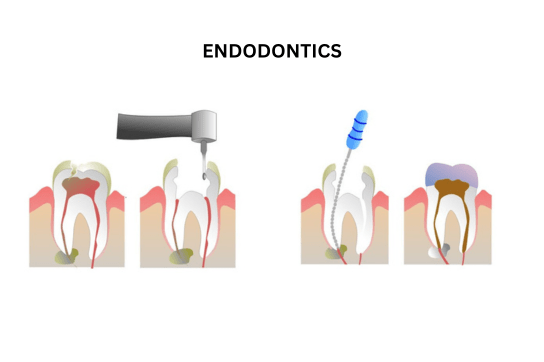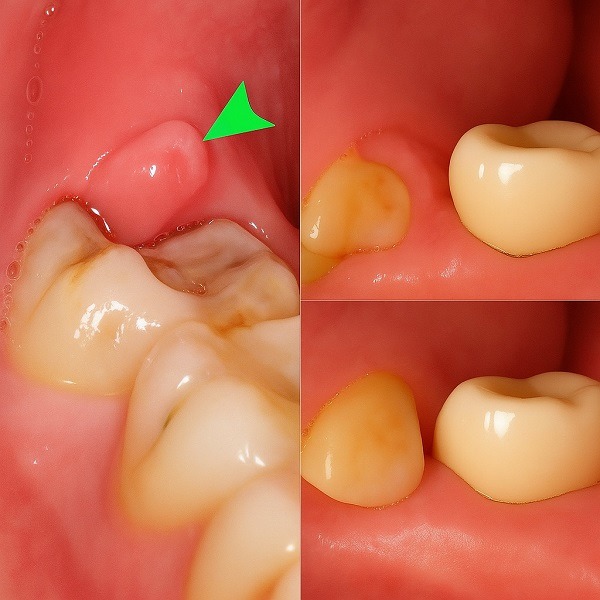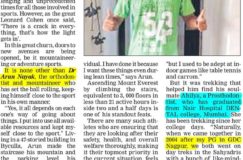If you’re suffering from a toothache, sensitivity, or swelling near your gums, your dentist might recommend a root canal treatment. This dental procedure helps relieve pain, save your natural tooth, and restore oral health. In this blog, we explain in simple terms what root canal treatment is, when you need it, how it’s done, how long it takes, and why it is often the best solution.
Quick Summary:
Root canal treatment is a painless dental procedure to remove infection from inside the tooth and save your natural tooth. It helps prevent extraction and restores function. Typically completed in 1–2 sittings, it’s effective, affordable, and long-lasting.
What Is Root Canal Treatment?

Root canal treatment is a dental procedure that involves removing the infected or inflamed pulp from inside the tooth. The empty canal is then carefully cleaned, shaped, filled, and sealed. The purpose is to eliminate bacteria, stop further infection, and save the natural tooth from extraction.
As a dentist, our first line of treatment is always to save the tooth when possible. Premature extractions can lead to:
- Difficulty in chewing
- Change in facial aesthetics
- Psychological impact due to missing teeth
- Higher long-term costs due to implants or bridges
Saving a tooth through root canal treatment is a more economical and conservative approach.
A fully developed tooth can survive without the pulp, as it continues to be nourished by surrounding tissues. Thus, root canal treatment helps retain oral function and aesthetics.
When Is Root Canal Treatment Required?
You may need a root canal if:
- Throbbing or persistent tooth ache. Patient complains of pain throughout the day and it gets aggravated on lying down
- Extreme sensitivity to temperature especially hot foods and liquids. Possibility of deep cavity in the tooth which extends to the nerve
- If there is history of trauma, Injury to the tooth at some point can cause slow death and infection of the dental pulp leading to the need for a root canal. A draining sinus seen on the gingiva or gum. A gum boil indicates infection in the tooth which causes swelling and tenderness in the gums
- Fractured tooth- If the fracture line does not extend very deep a root canal can be done followed by a crown to save the tooth
- Extreme wear of the tooth leading to severe sensitivity and pain in the tooth
- Intentional root canal- If a teeth is protruding and it need to be aligned the first treatment is always orthodontics. If the patient refuses braces and still wants it aligned, A root canal is done intentionally to be able to shape the tooth for a crown
- Severe periodontitis can lead to pocket which can cause the tooth to get infected which will then require a root canal.
- Wisdom teeth positioned badly can cause decay in the second last molars. which then might require root canals along with the extraction of the wisdom tooth
If the patient is on blood thinners and cannot stop them extractions might not be possible but the tooth might have infection and could be painful. In that case root canals are the treatment of choice.
Don’t ignore signs like swelling, pus, discoloration, or continuous pain. Timely RCT can save your tooth.
Root Canal Treatment Procedure: Step-by-Step
1.Xray and diagnosis – A pre-treatment x-ray is taken for preliminary information and to make a proper diagnosis
2.Local anaesthesia– Root canal treatment is virtually painless nowadays and by administrating local anaesthesia the patient is very comfortable throughout the procedure
3.Cleaning and disinfection-Root canal instruments are used for dental pulp removal and shaping the canal space. Disinfection is necessary for a good prognosis.
4.Filling and sealing-The shaped dental canal space is filled with a sealer and an inert dental filling material.
5.Crown placement-when there is excessive tooth loss the tooth can be reinforced with an only or a dental crown.
The above procedures can be done as a single sitting root canal or over multiple sittings. The number of sittings depends on the individual case and the infection etc.
Is Root Canal Surgery Painful?
No. Root canal treatment is virtually painless. Thanks to advanced local anaesthesia and techniques, it feels similar to getting a dental filling.
You may feel slight soreness or tenderness post-treatment, especially while chewing. This usually subsides in 1–2 days.
Antibiotics and painkillers are prescribed to aid healing and comfort.
Root Canal Treatment Duration and Aftercare
Root Canal Treatment Duration:
- Typically completed over two sittings.
- Duration may increase if the nerve canals are calcified or very narrow.
- In such cases, multiple cleaning and medication appointments may be required before final sealing.
Aftercare Following Root Canal Treatment:
- The tooth is medicated between appointments to control infection.
- Antibiotics and painkillers are commonly prescribed.
- Mild tenderness or discomfort while chewing is normal post-procedure.
- Avoid hard or sticky foods until the final filling or crown is placed.
Patient Scenario – Real Life Example

Mrs. Sharma, a 42-year-old working professional from Mumbai, came with severe molar pain. After X-ray, she was advised root canal. The procedure was completed in 2 sittings without discomfort. She resumed work the next day and got her crown fixed the following week.
Root Canal vs Tooth Extraction vs Dental Implant
| Feature | Root Canal | Extraction | Implant |
| Natural Tooth Saved | ✅ Yes | ❌ No | ❌ No |
| Pain & Recovery | Mild, 3–7 days | Moderate | High, 3–6 months |
| Cost-Effective | ✅ Yes | ✅ Yes | ❌ Expensive |
| Cosmetic Impact | None | Visible gap | Natural-looking |
| Long-Term Function | ✅ Strong | ❌ Limited | ✅ Strong |
Why Choose Fort Dental Clinic for Root Canal Treatment?
At fort dental clinic we believe in providing good conservative treatment and root canals are a conservative way of treating and retaining a tooth. With more than 18 years of experience, the orthodontist at our clinic will help you through the process to make your experience comfortable. All x-rays are taken in house and modern equipment is used so the treatment can be done effectively and quickly.
Our goal is to save your tooth, not extract it unnecessarily.
For any queries or an appointment, you can call on 0222268444 or email us at fortdentclinic@gmail.com
FAQs – Root Canal Questions Patients Ask
Not at all. Local anaesthesia makes the process painless.
Usually 1–2 sittings. Complex cases may take 3 or more.
Yes! Most patients return to work the same or next day.
Yes, it protects the tooth and restores chewing strength.
Infection can spread, causing abscess or tooth loss.
Yes! It saves your natural tooth and avoids bone loss.







